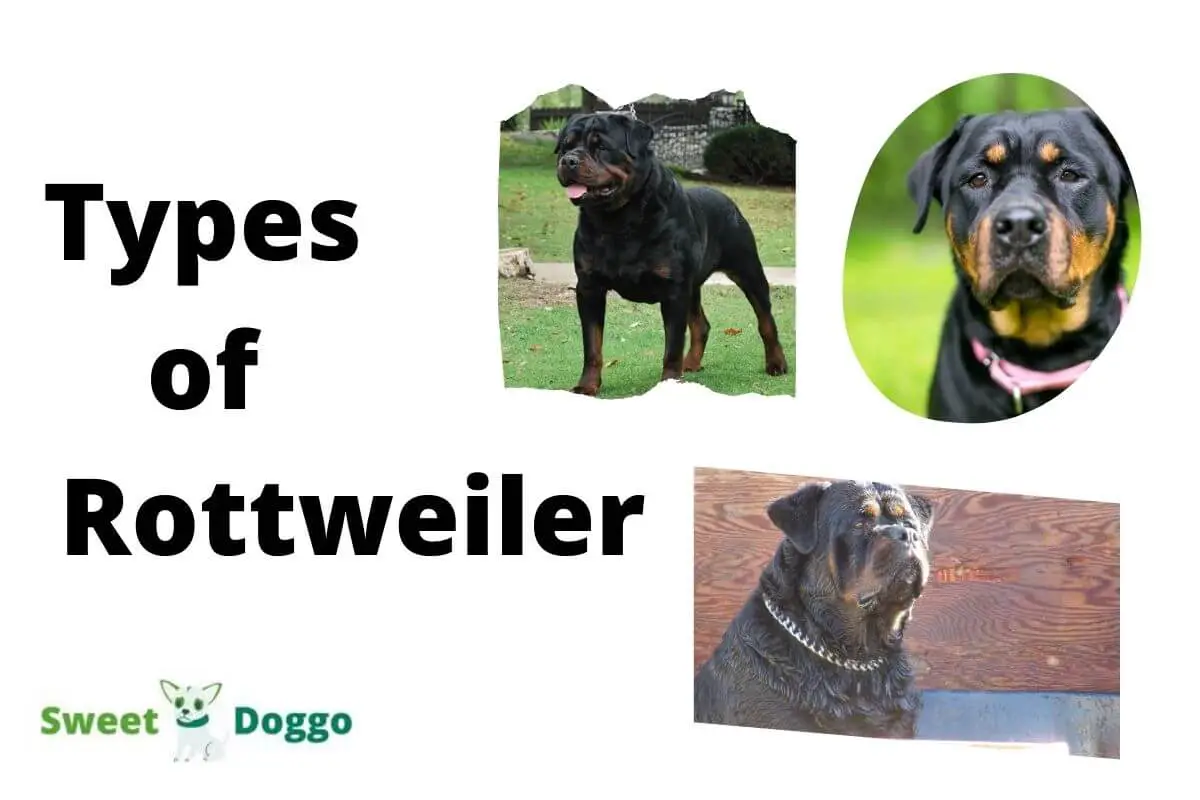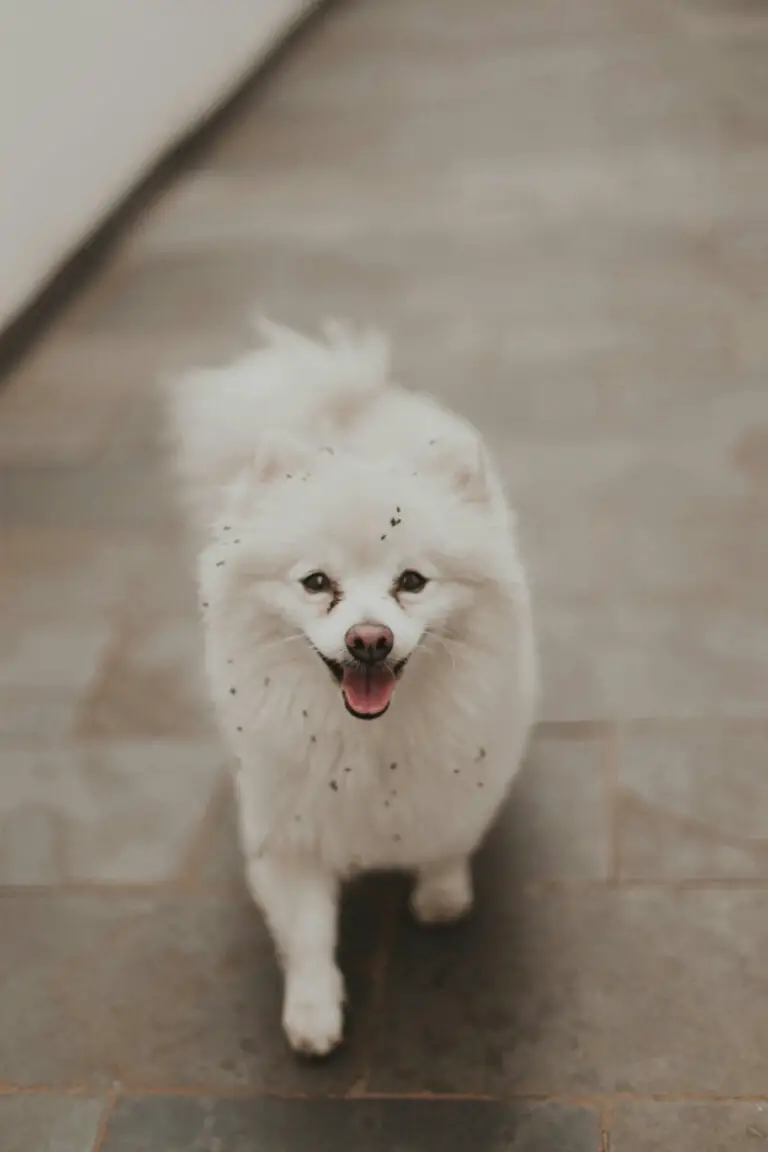If you’re a Rottweiler owner or just a fan of the breed, chances are you’ve heard the terms American Rottweiler, German Rottweiler, and rare Rottweilers, among others.
Commonly, these names are used to refer to different types of Rottweilers; but is there a chance that all those tags are referring to the same dog?
Keep reading below to learn what the true types of Rottweilers are, how they differ, what some of the most common misunderstandings are, and what variations to the breed standard you should be aware of.
Table of Contents
Different Types of Rottweiler
According to the opinion of breeders and other experts in the canine world, there are only 2 types of Rottweiler: the “well-bred” Rottweiler and the “poorly bred” Rottweiler. However, in the popular sphere, the following types or variations are usually spoken of:
- German Rottweiler
- American Rottweiler
- Roman Rottweiler
What makes a Rottweiler American or German? Surprisingly, this only has to do with the dog’s country of birth. That is, the Rottweiler born in Germany is considered German, and the one born in the United States is American.
Although not used officially, most sources use the German, American, and Roman designations to refer to “types” within the Rottweiler breed.
German Rottweiler
For a Rottweiler to be German, it only has to have been raised in Germany. These specimens are often highly sought after among fans of the breed, especially due to the purity of the German breeding line.
Many wonders: then why does the German dog look different from the American? Its head is broad, its bones are thicker, and the body is significantly stockier.
The explanation is that the quality of the German Rottie breeding process is superior. The German Rottweiler Club (Allgemeiner Deutscher Rottweiler-Klub – ADRK) is known to set very strict rules and guidelines.
Only the best specimens can be reproduced there, say those that must adhere to the breed standard, those that are very healthy and also manage to pass several qualification tests.
It’s no wonder German Rottweilers always have such impressive looks and excellent temperaments.
German-bred specimens must meet rigorous physical and temperamental requirements before their owners can breed them. As a result, German Rottweiler puppies true to the breed standard are obtained.
Recommended: Rottweiler Temperament – Is It The Right Personality For You?
American Rottweiler
The American Rottweiler is essentially an American-born and bred Rottweiler. Contrary to what is established by the American Kennel Club (AKC), the goal of many American breeders has not been to produce a working dog, but rather a powerful-looking but more elegant Rottie.
This is why the common American Rottweiler can have a more slender appearance, with long legs and a smaller head than the broadhead that characterizes the German dog.
These differences are due to the indiscriminate breeding process that the breed has suffered. Some breeders are just trying to make a quick buck, hence they pay little attention to the requirements.
Despite the spread of many Rottweilers that do not meet the breed standard, there are still breeders capable of producing specimens worthy of the American show ring.
Roman Rottweiler
In reality, the Roman or Giant Rottweiler is not a type of Rottweiler, but rather an oversized specimen that has been selectively bred to more closely resemble a Mastiff. The term Roman Rottweiler or “King Rottweiler” is often a sales gimmick by unethical breeders.
The increase in size in these specimens not only does not adhere to the breed standard but also has negative consequences for the dog’s health. Giant Rotties are known to be prone to hip dysplasia and other orthopedic problems.
The so-called Roman Rottweiler type lacks official recognition.
Popular Rottweiler Variations (Tailed, Albino, Longhaired)
Due to the various breeding lines, we may hear other classifications in the popular arena today, such as tailed Rottweilers and rare Rottweilers. This has caused some confusion, generating doubts about whether they are types of Rottweilers or if they are different breeds.
Rottweiler with tail
The practice of tail docking on specific breeds such as the Rottweiler has been around for many years, however, this has been banned in Germany since 1999. The idea that Rottweilers do not have long tails remains entrenched in the population, hence many hesitate to see a Rottie with a natural tail.
The truth is that a tailed Rottweiler is not a specific type or another separate breed; It’s just that, a Rottweiler with a tail. These specimens have become increasingly common since the updating of the German standard.
Both the ADRK and the FCI (International Cynological Federation) require that the Rottweiler keep its tail in its natural form.
For its part, the AKC (American Kennel Club) does establish docking of the tail as a requirement. The American Rottweiler should have a docked tail, short and close to the body, leaving only one or two vertebrae.
While tail docking is often a personal preference for many Rottweiler breeders, more and more dogs are retaining their tails, an important part of their natural anatomy that helps them achieve better balance and communication.
Rare Rottweilers
Another classification often used by breeders is “rare Rottweiler”, almost always to refer to albino, red, blue, or long-haired Rottweilers. These specimens may be advertised as expensive or highly desirable, but they are not even considered Rottweilers by the standard.
These dogs do not meet the requirements of the breed, and in fact, the term “rare” is often said to indicate that they have been bred for color and size variations.
Albino or white Rottweiler
Some Rottweilers are known to exhibit albinism; they are the so-called “Albino Rottweilers”. But this is a rare condition in animals, which is why it is uncommon to get albinos in a litter.
Most albino or white Rottweilers are not the product of albinism, but of breed mixing, overbreeding inbreeding, or a combination of the above.
For example, a breeder can obtain white Rotties by crossing the Rottweiler breed with a white German Shepherd. This breeding would result in a new puppy with all the special features of a Rottweiler, such as muscles and verve, but with an unusual white coat.
According to the different clubs and associations, a Rottweiler should never have white on their fur, not even in the form of markings.
Red or blue Rottweiler
Similarly, it should be noted that red or blue Rotties are not usually purebred dogs. Most of the time these unique colors are obtained through crossbreeding with other breeds or with poorly-marked Rottweilers.
In the case of red specimens, it is said that obtaining a red Rottweiler puppy naturally in the litter is not entirely impossible; however, it is highly unlikely. These dogs exhibit a reddish-brown or mahogany coat with typical tan markings. Their fur has very little, if any, black in color.
For its part, the blue Rottweiler is actually a grayish color, with the markings in a slightly lighter tan tone.
According to the breed standard, a Rottweiler should be black with clearly defined tan, or mahogany markings. Other colors are not allowed.
Breeders specifically dedicated to breeding rare colored Rottweilers often ignore such important requirements as good health and temperament.
Long haired Rottweiler
Most people are only familiar with the traditional short-haired Rottweiler, but it is possible for a litter to produce 1-2 puppies with longer, coarser coats than usual. These are the long-haired Rottweilers, a fairly difficult variation to find.
It should be noted that although such specimens are also purebred, they do not meet the breed standard. The long coat on the Rottweiler is considered a serious fault.




